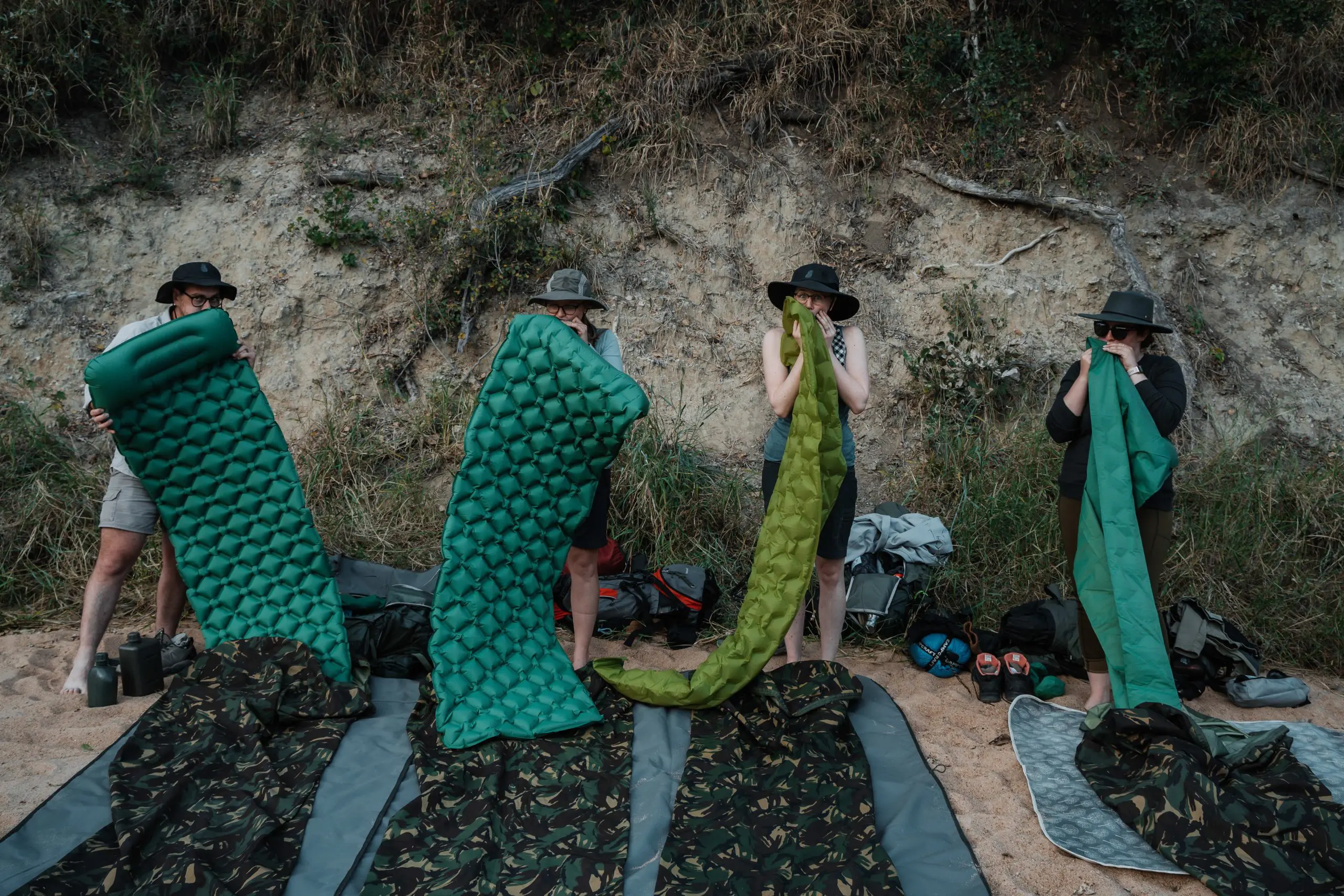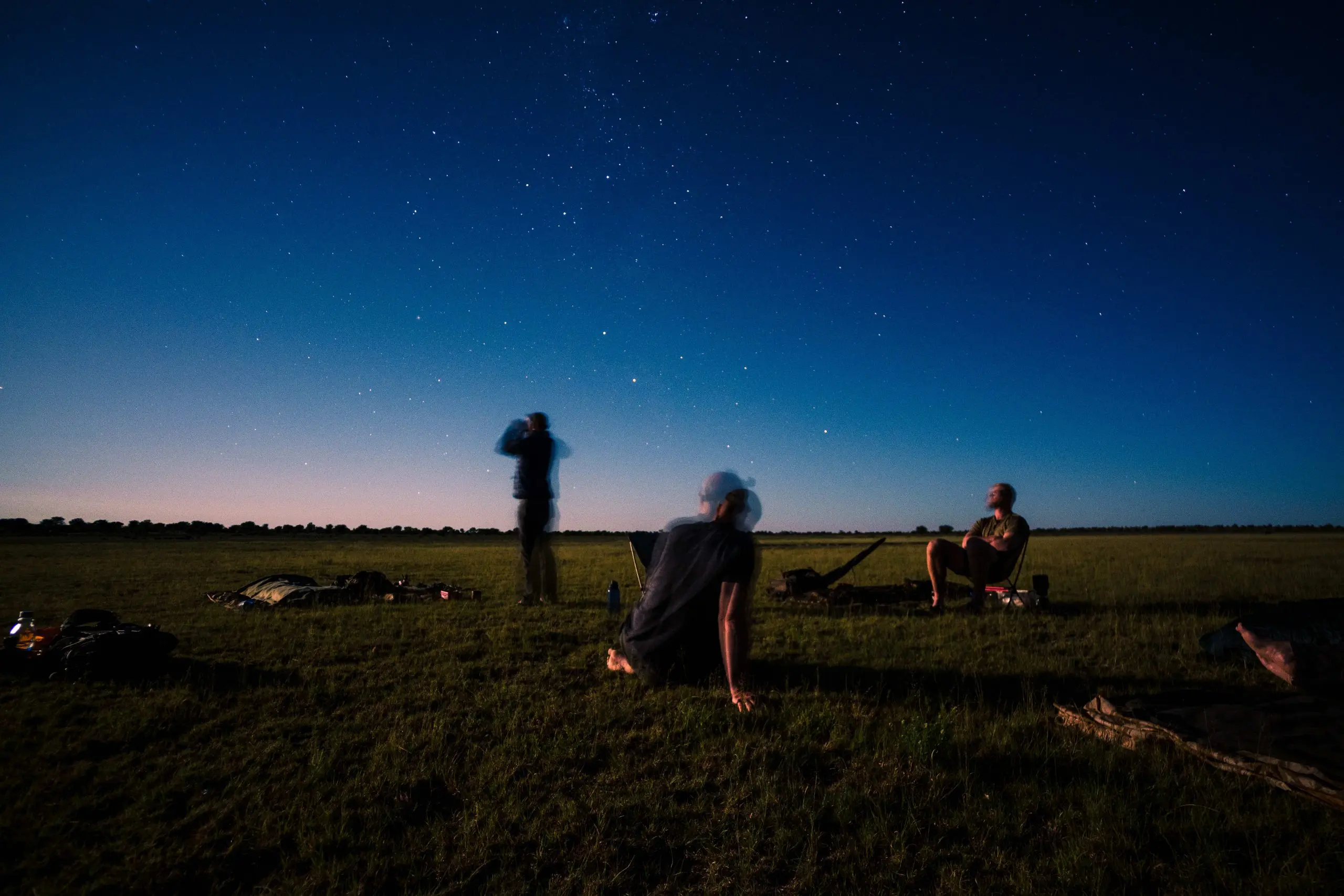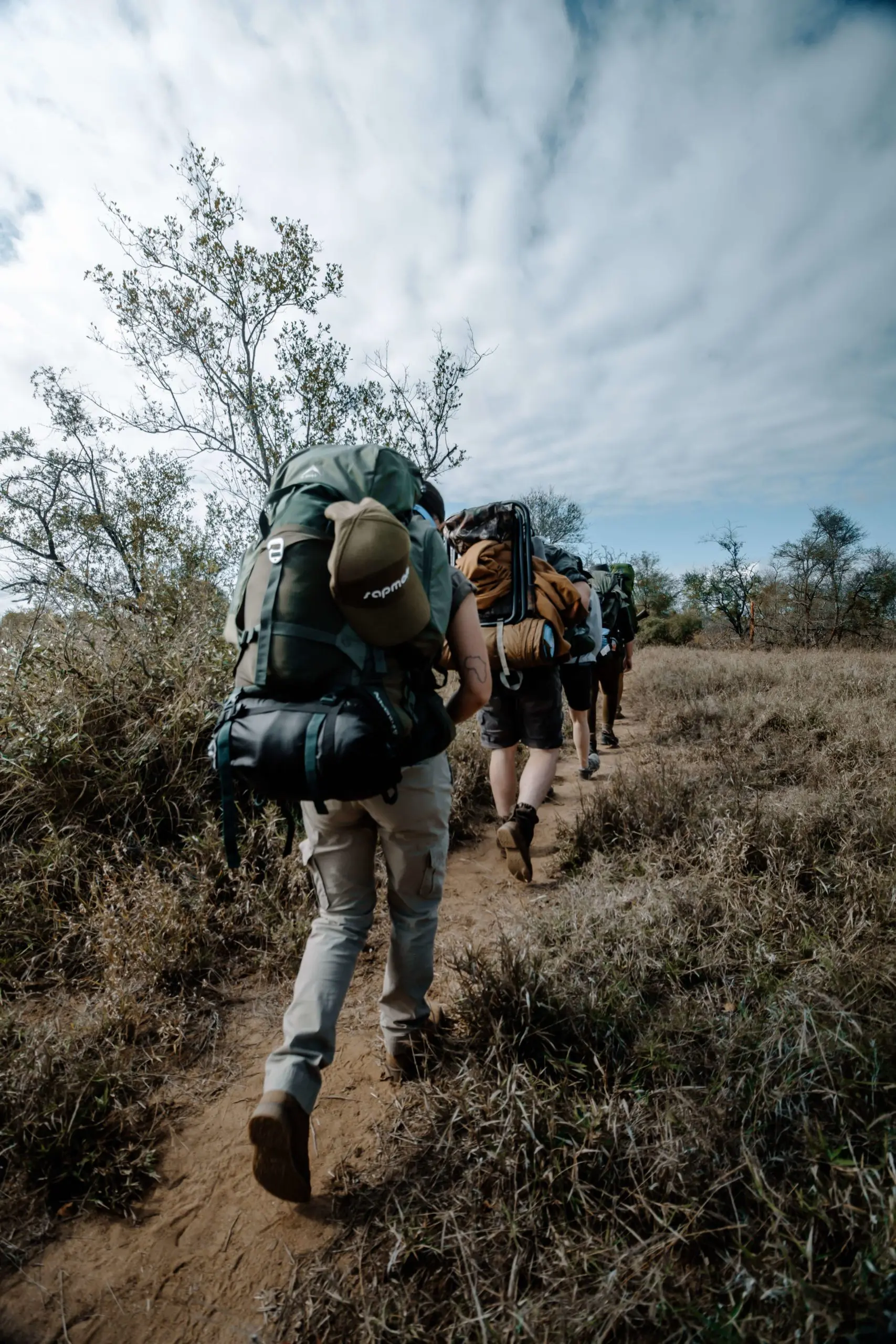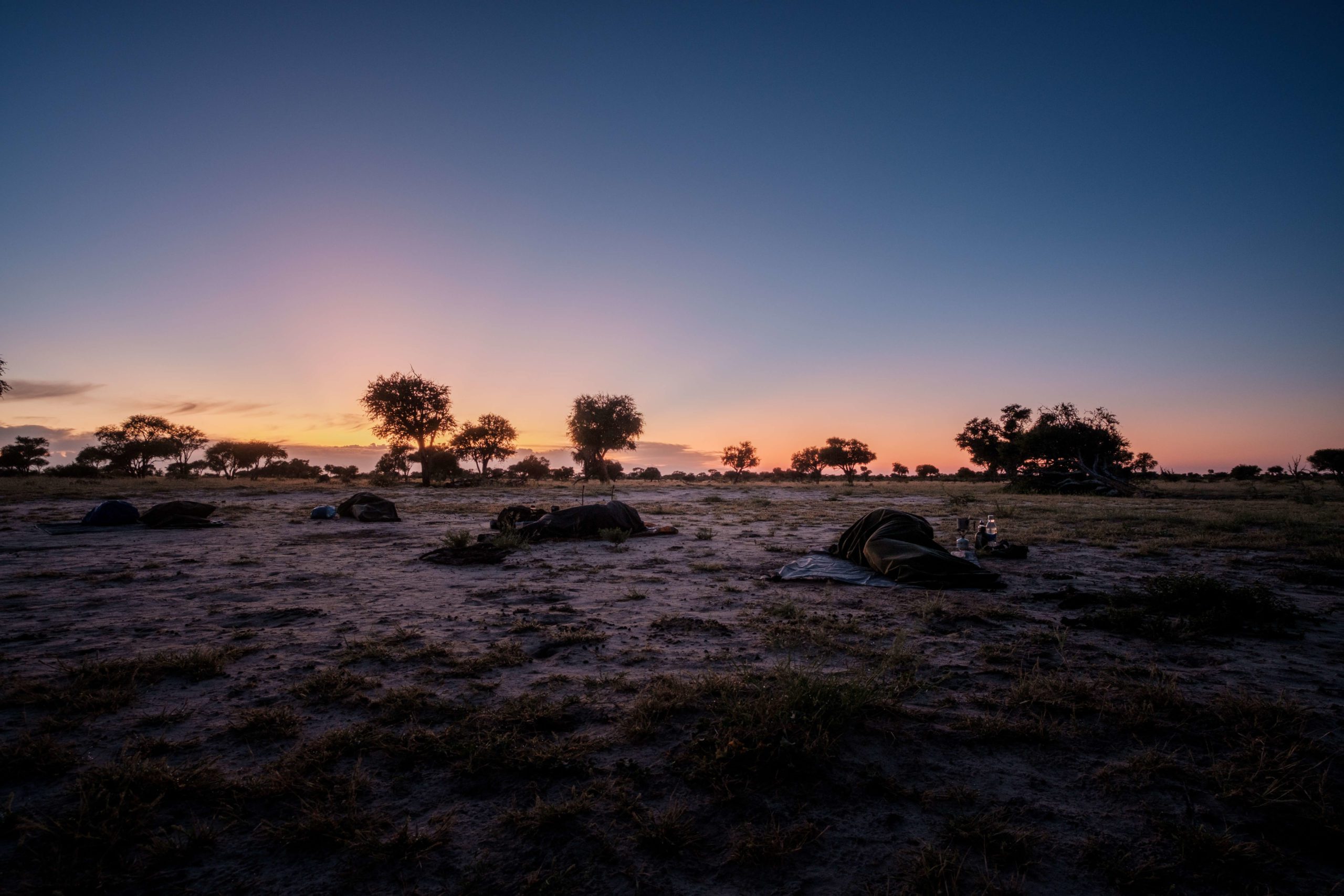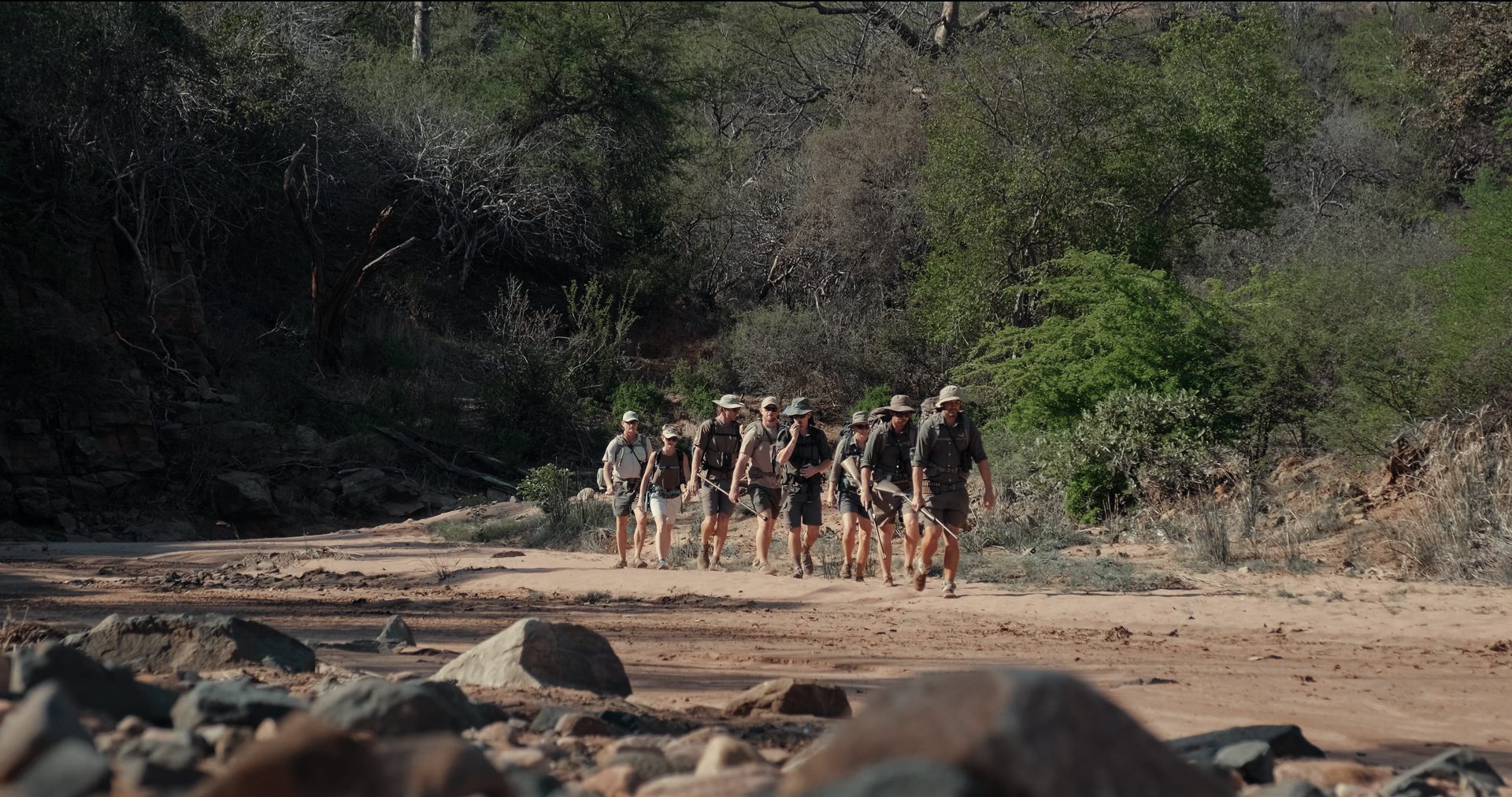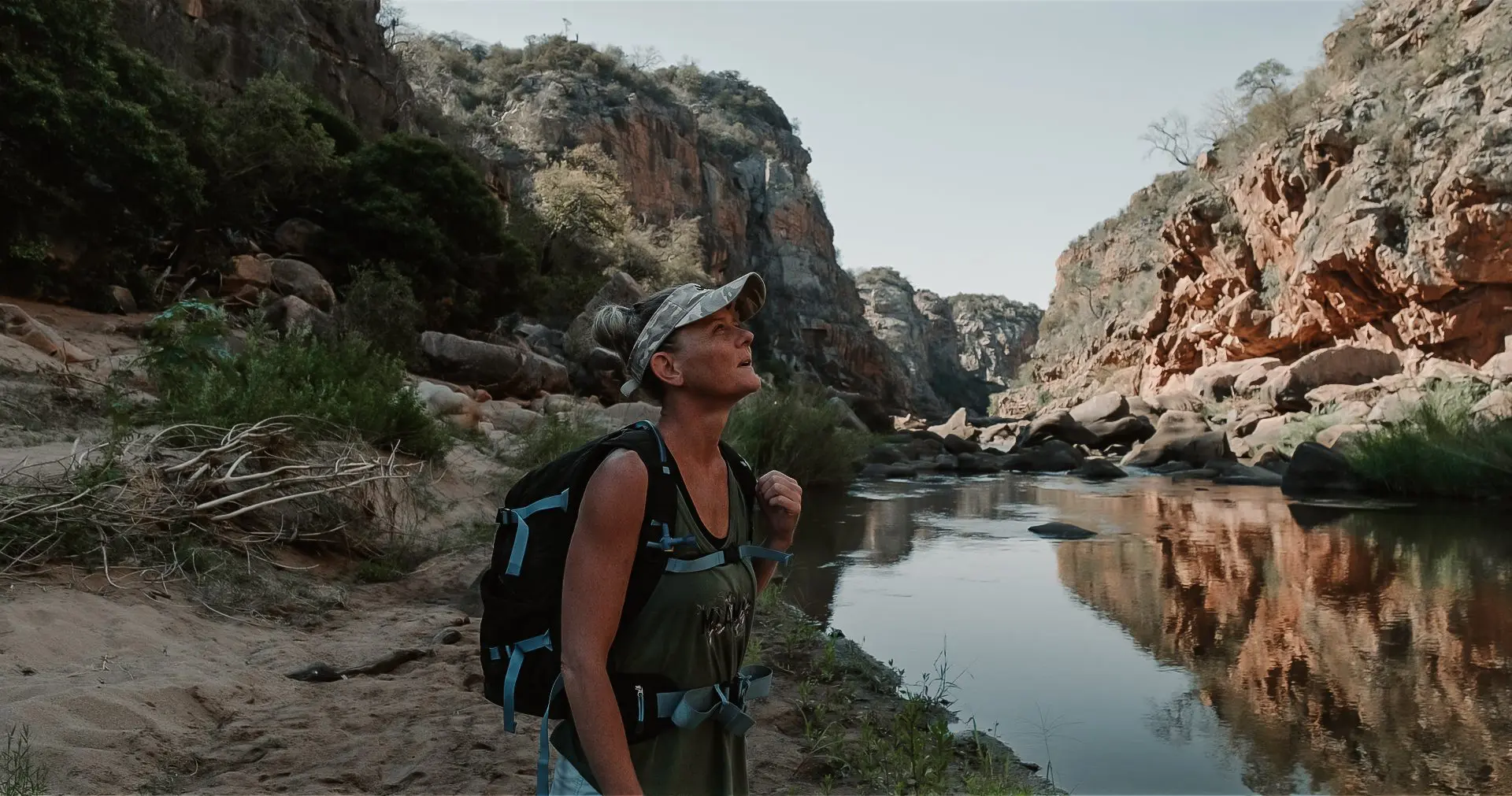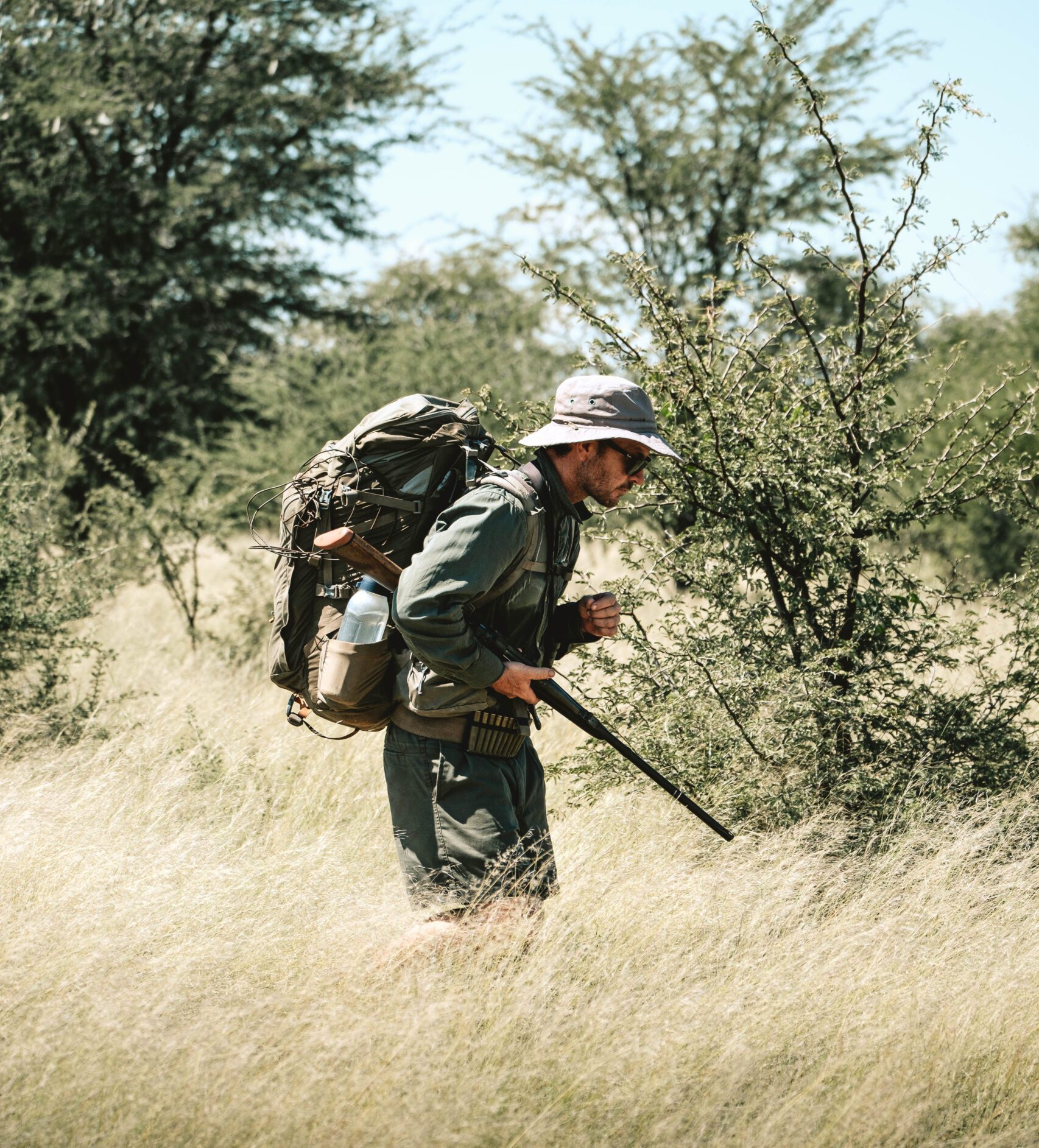When it comes to selecting a backpack for Primitive Trail, there are a few key factors to consider. First and foremost, you’ll want to think about the size of the backpack. The capacity required will largely depend on the duration of your expedition, as well as the gear you plan to bring with you. Our Primitive Trails typically take place over a three-night period. However, the back-to-back option (a six-nighter) has proved to be popular for destinations such as Kalahari and Makuya. We recommend selecting a backpack with the capacity to hold between 45 and 65 litres.
Next, consider the features of the backpack. Look for things like multiple compartments for organisation, alternative access to the main compartment, a comfortable and adjustable harness system, and a sturdy and durable construction. Some packs may come with additional features such as a built-in hydration system, a rain cover, or a built-in daypack. All of these features are important, so let’s discuss them in greater detail.
The fit of the backpack is a very important consideration. Make sure to try on several different packs to find the one that fits you best. This will ensure that the pack you select is comfortable to wear and that it properly distributes the weight of your gear. Streamline packs that hug your body are less likely to snag on branches and thorns as you move through the bush. Avoid backpacks that have a long horizontal cross-section between your spine and the back of the bag. The further the pack extends behind the spine, the greater the backward pull and the more energy is wasted on compensation.
You want to make sure that your backpack has well-padded and adjustable shoulder and hip straps to further enhance the fit and distribute weight. Approximately 80 percent of your backpack’s weight should be supported on your hips and not on your shoulders, so make sure there is sufficient padding around the hip region and a strong buckle to secure it tightly. Finally, a lightweight and supportive internal (or external) frame will assist in saving energy and making your experience so much more comfortable.
Traditionally the main compartment of a backpack could only be accessed from the top, which made searching for specific items or packing and repacking relatively challenging. Alternative access to the main compartment via a peripheral and/or central zip is a more recent feature, which has greatly improved the situation. We therefore recommend considering a pack with alternative access features such as this.
When it comes to the material of the pack, you have a few options. Many packs are made from nylon or polyester, which are lightweight and durable. Some high-end packs may be made from more premium materials such as Dyneema or Cordura, which offer even greater durability and resistance to abrasion. Consider that the materials may differ in weight. You will have to find a balance between the material’s weight and durability. Ideally you want a lightweight and durable backpack. You can back up your selection by seeking out reputable brands and backpacks with good warranty options.
Remember to check for additional features such as a rain-cover and/or built-in daypack. Most backpacks also have the capacity to accommodate hydration packs. They are convenient, but often leak or break due to their complex fittings. Also note that in some instances they are difficult to remove or return once the backpack has been packed and therefore become a nuisance to refill. Having the capacity to carry water is of the utmost importance on Primitive Trail and our experience has taught us that hydration packs regularly become a limiting factor. We therefore carry wide-mouth water bottles instead (at least two), which is by far the most reliable option. Consequently, another feature we look out for are suitable side pouches to hold the bottles securely.
In conclusion, backpack selection for Primitive Trail will be very personal as it will depend on your unique physical features and your budget. We recommend that you borrow or rent backpacks (Scuttle.co.za) until you have found the most suitable pack. As always, we would encourage you to consider the environment. Practice consumer consciousness and only purchase a backpack if you are able to justify it with repeated use.
Happy Primitive Trails!
Here is a 10-point checklist for your convenience.
- Capacity – 45 to 65 litres.
- Shape and fit of the backpack – streamline and comfortable.
- Backpack fittings – padded hip/shoulder straps and supportive frame.
- Alternative access to the main compartment.
- Material weight and durability – light and hardy.
- Reputable brands and warranty options.
- Additional features – rain cover, daypack, hydration pack.
- Practice consumer consciousness.
- Budget
- Justify your purchase.



